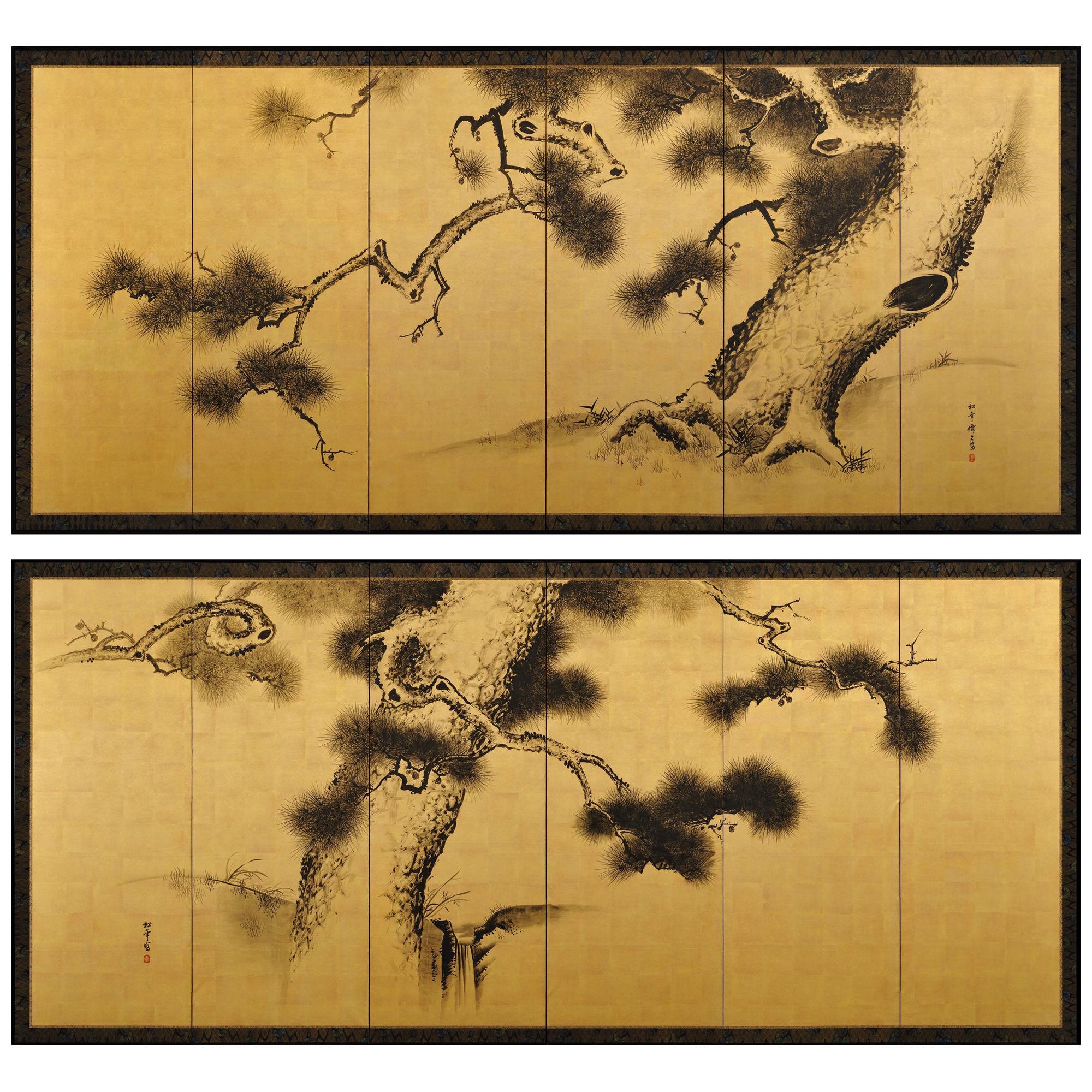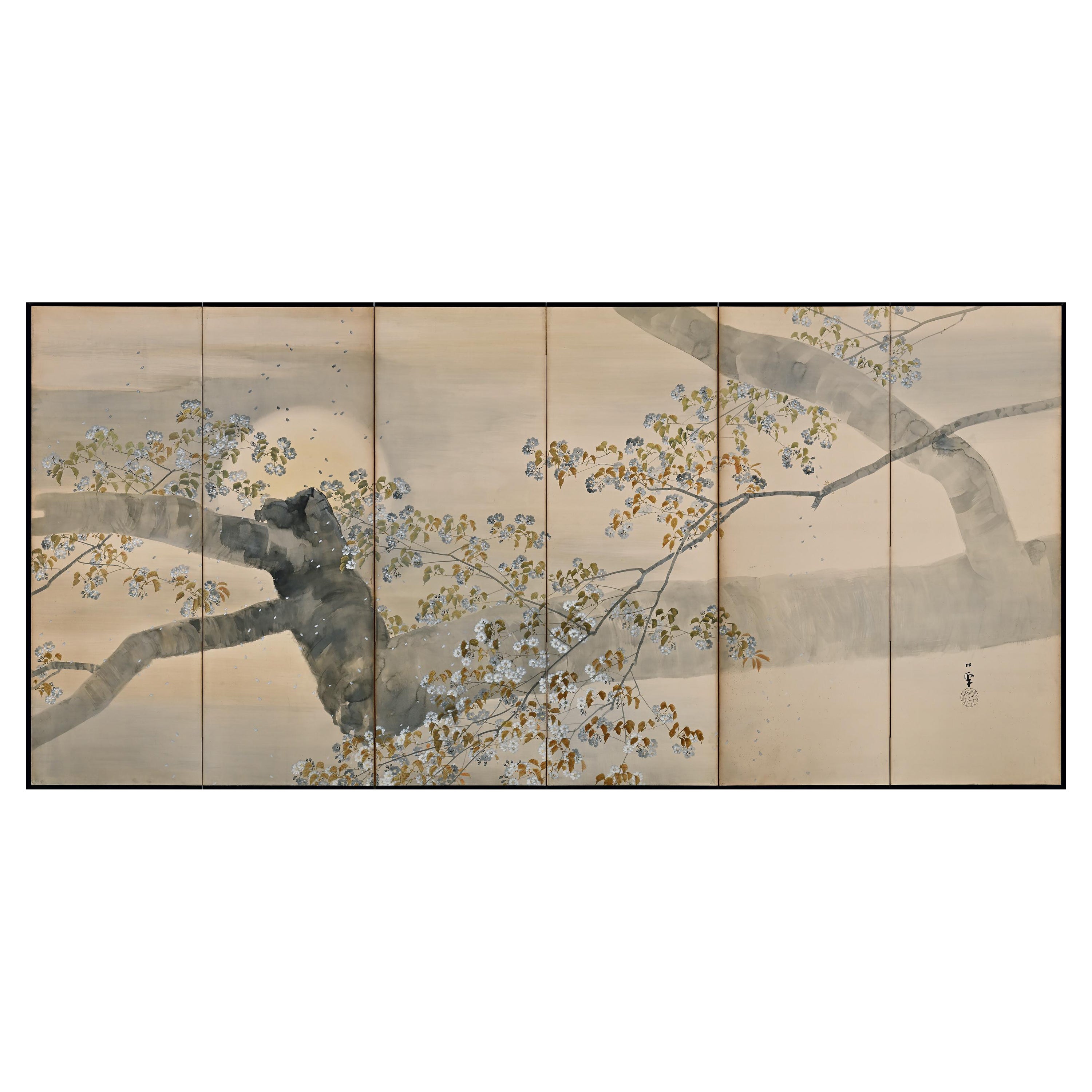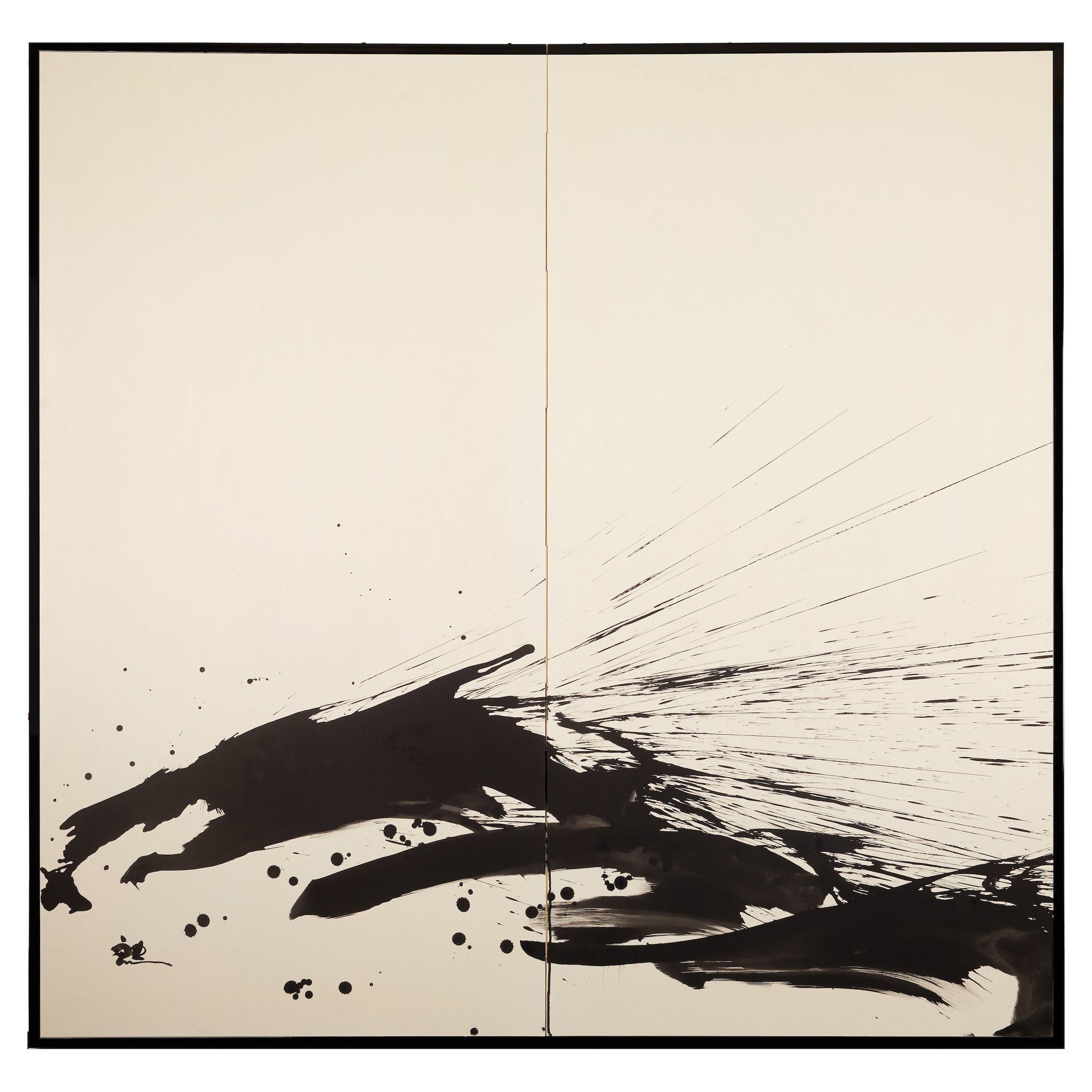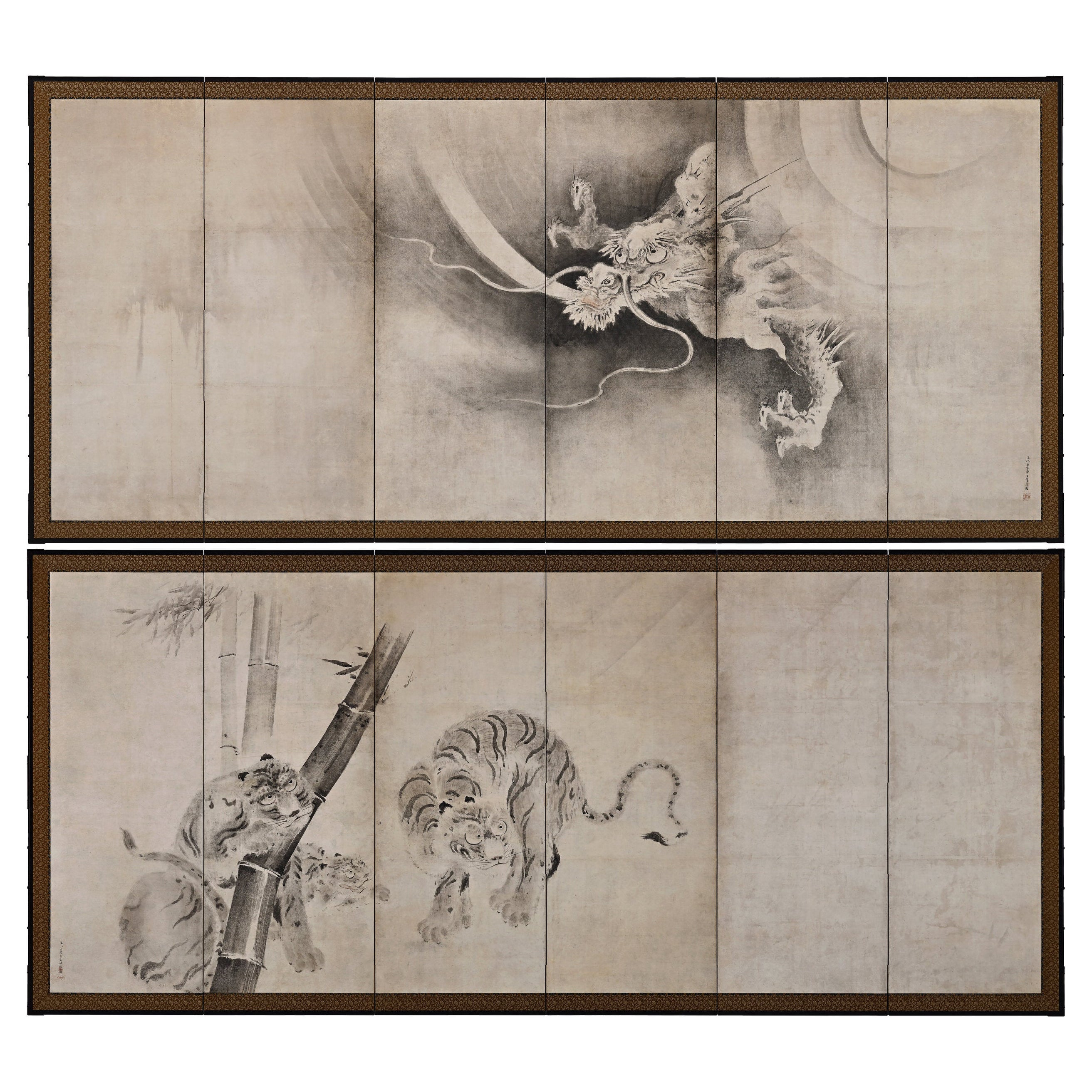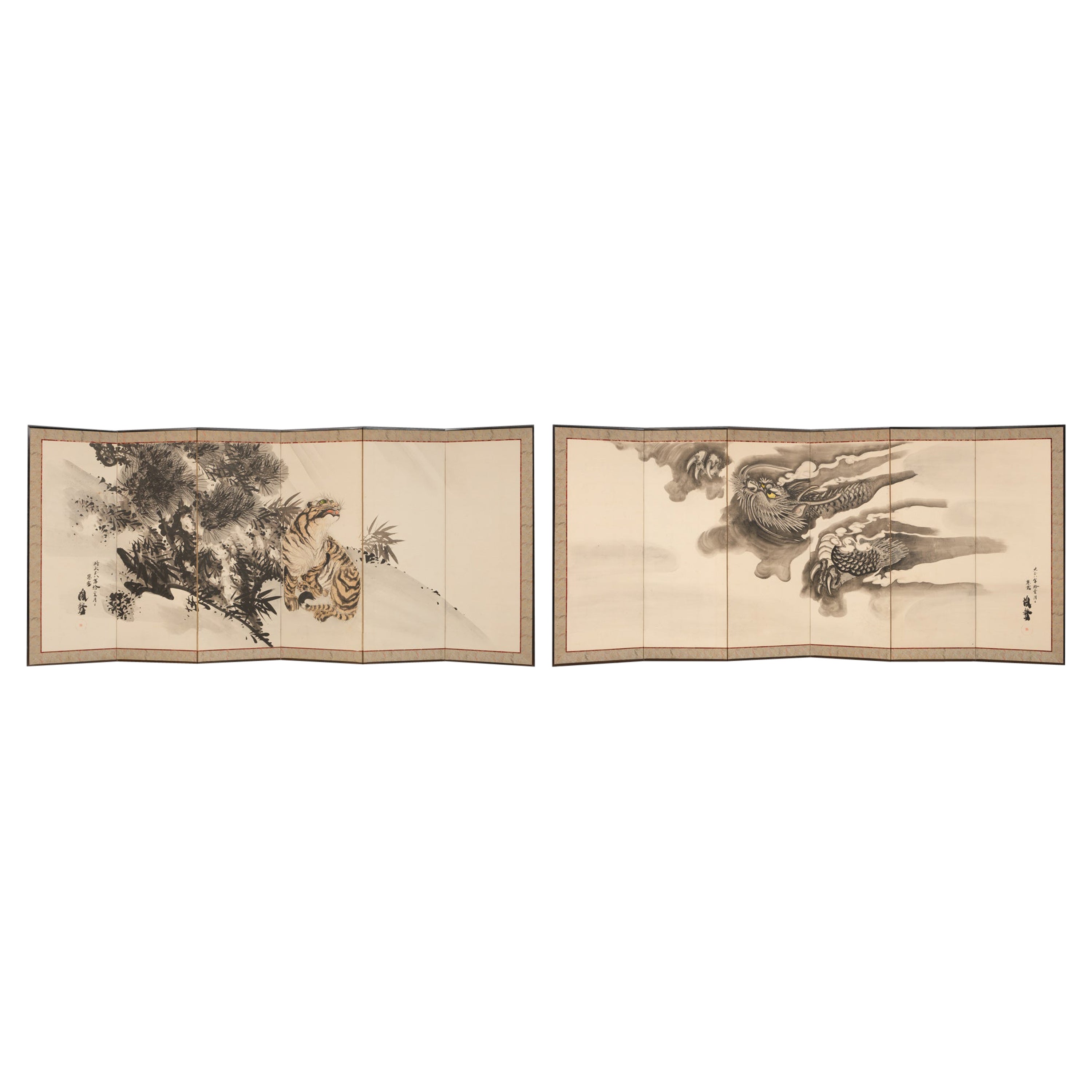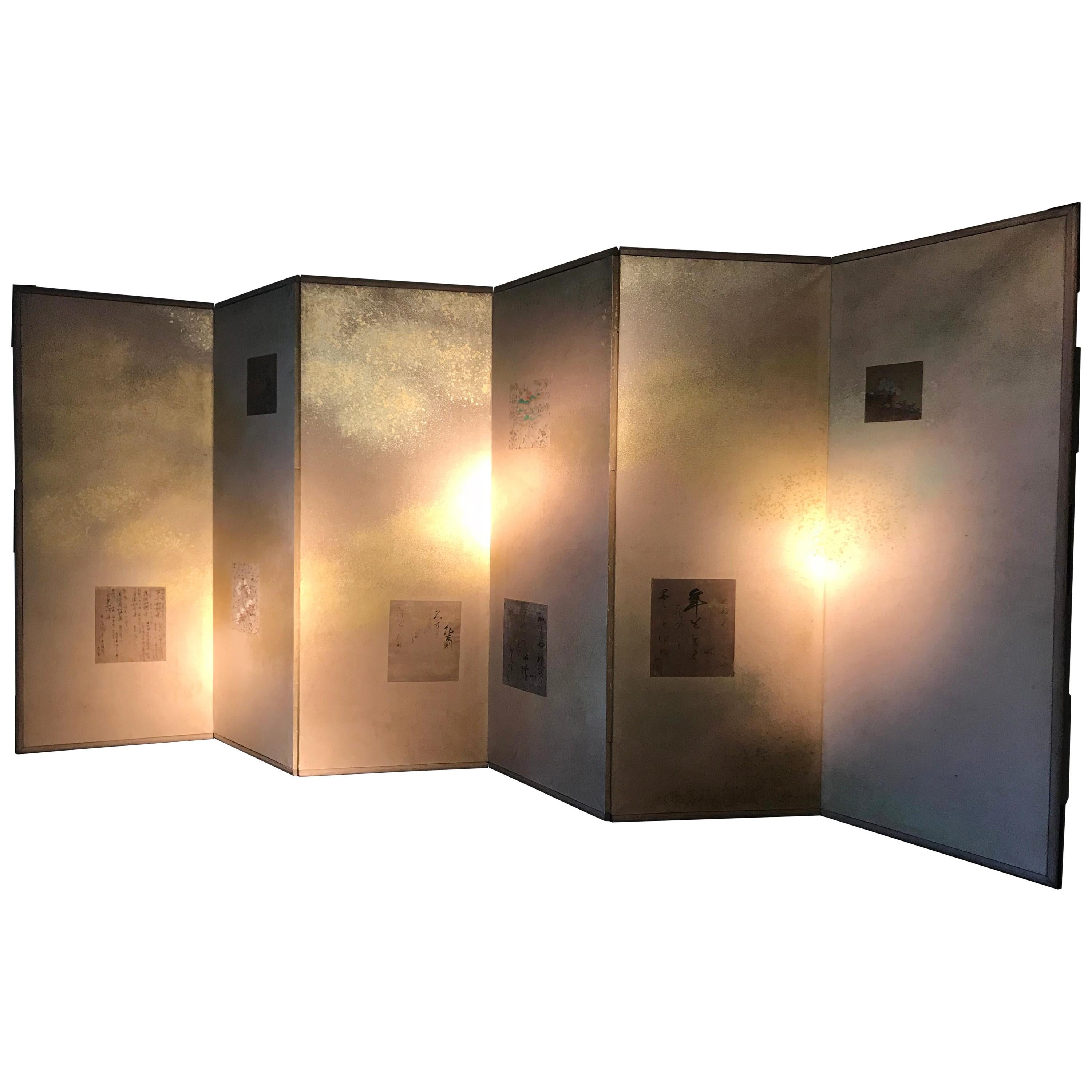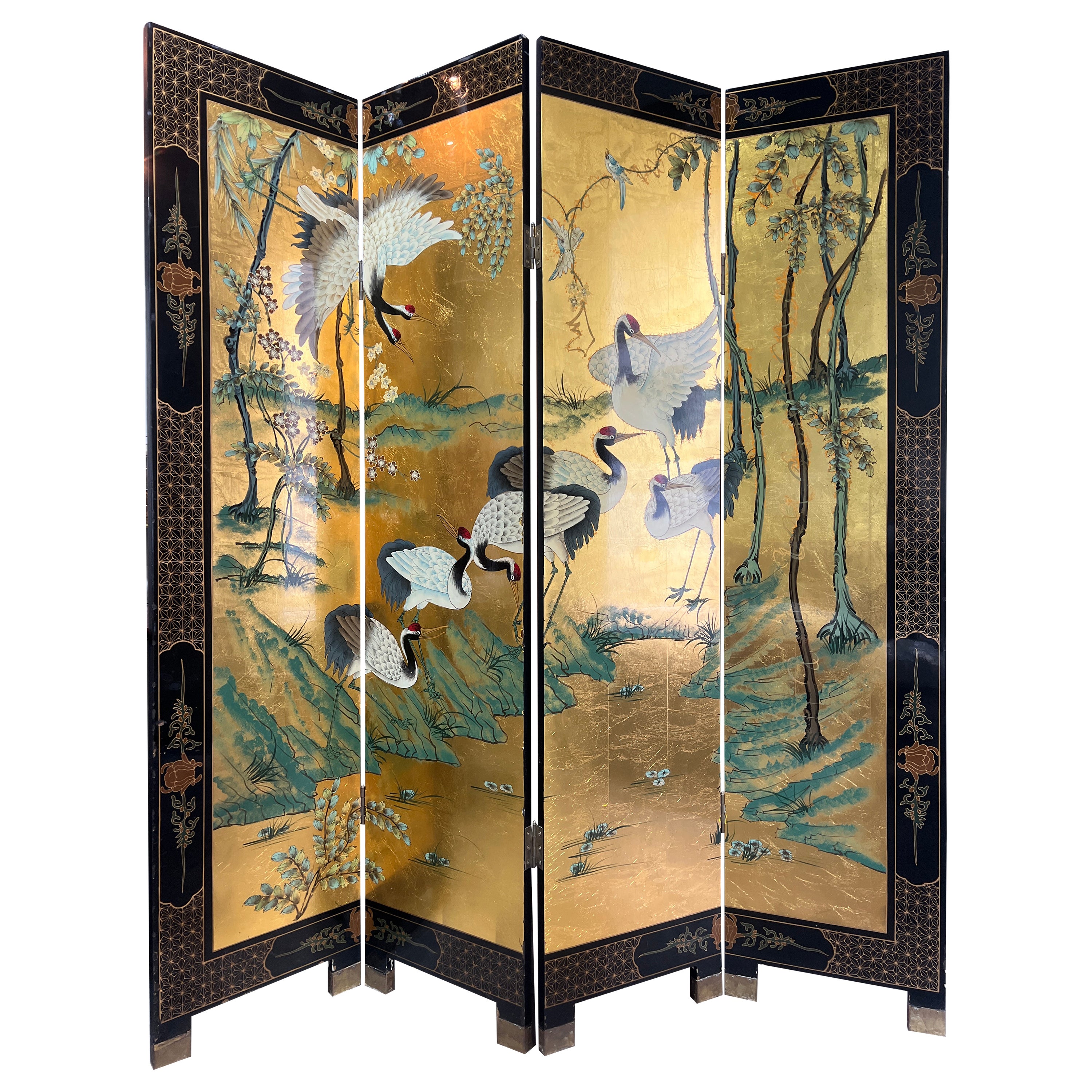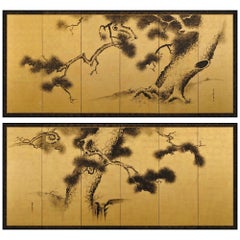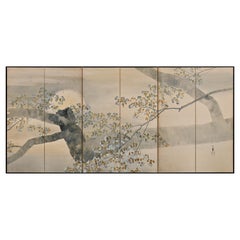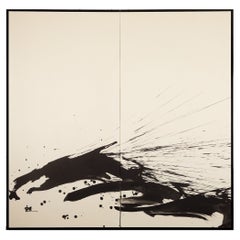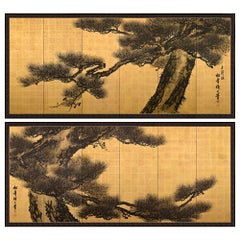
Circa 1900 Japanese Pine Screen Pair. Aged Dragons by Suzuki Shonen.
View Similar Items
Want more images or videos?
Request additional images or videos from the seller
1 of 9
Circa 1900 Japanese Pine Screen Pair. Aged Dragons by Suzuki Shonen.
About the Item
- Dimensions:Height: 67 in (170.18 cm)Width: 146 in (370.84 cm)Depth: 0.75 in (1.91 cm)
- Style:Meiji (Of the Period)
- Materials and Techniques:
- Place of Origin:
- Period:
- Date of Manufacture:Circa 1900
- Condition:Refinished. Wear consistent with age and use. The screens have recently been completely remounted and present beautifully.
- Seller Location:Kyoto, JP
- Reference Number:1stDibs: LU2472336649152
About the Seller
5.0
Recognized Seller
These prestigious sellers are industry leaders and represent the highest echelon for item quality and design.
Established in 2001
1stDibs seller since 2016
61 sales on 1stDibs
Typical response time: 6 hours
More From This SellerView All
- Japanese Screen pair. Late 19th Century. Ink Pine Trees on Gold by Suzuki ShonenLocated in Kyoto, JPSuzuki Shonen (1848-1918) Meiji period (1868-1912), late 19th century. Twisted pines Pair of six-fold screens. Ink on a gold leaf ground. Sig...Category
Antique Late 19th Century Japanese Meiji Paintings and Screens
MaterialsGold Leaf
- Meiji Era, Circa 1900 Japanese Screen Pair, Flowers & Birds of Spring & AutumnLocated in Kyoto, JPFlowers & Birds of Spring and Autumn Unknown artist. Japan. Meiji period, circa 1900. A pair of six-fold screens. Ink, color, gofun and gold leaf on paper. Signed: Gaga S...Category
Antique 1890s Japanese Meiji Paintings and Screens
MaterialsGold Leaf
- Circa 1900 Japanese Screen. Cherry Blossoms in Moonlight. Meiji period.Located in Kyoto, JPKobayashi Shosen (1877-1946) Cherry Blossoms in Moonlight Six-panel Japanese Screen. Ink, color and gofun on paper. The image depicts a stunning scene captured on a six-panel Japa...Category
Antique 1890s Japanese Meiji Paintings and Screens
MaterialsPaper
- Circa 1700 Japanese Screen Pair, Cranes & Pines, Kyoto Kano SchoolLocated in Kyoto, JPPines and Cranes Anonymous. Kyoto Kano School. Late 17th/early 18th centuries, circa 1700. Pair of six-panel Japanese folding screens. Ink, gofun, pigment and gold leaf on paper. This bold composition presents two pine trees extending to the left and right across a gold leaf background. One tree is silhouetted against a green ground, golden clouds obscuring its true size, the other stretches across a stylized waterway. The pines are paired with Manchurian cranes with red crests and snow white plumage. Both have been highly auspicious motifs in East Asia since Chinese antiquity. Here the artist utilized fluid and instinctive ink brushstrokes to define the trunk, branches and tail feathers, in strong contrast to the precision and sharp angularity of the crane’s legs and beaks. The adoption of this vast metallic painting support required an unerring sense of design and composition, so that the negative space surrounding motifs could imply context for the otherwise floating pictorial elements. The brushwork detailing the trunks of the pines, the exaggerated dimensions of the pine trees and the strength and dynamism of the composition are all reminiscent of Kano Eitoku...Category
Antique Late 17th Century Japanese Edo Paintings and Screens
MaterialsGold Leaf
- 17th Century Japanese Screen Pair. Tiger & Dragon by Kaiho YusetsuLocated in Kyoto, JPKaiho Yusetsu (1598-1677) Tiger and Dragon Early Edo Period, Circa 1650 A Pair of Six-fold Japanese Screens. Ink and slight color on paper. Dimensions: Each screen: H. 171 cm x W. 380 cm (67.5’’ x 149.5’’) In this pair of early Edo period Japanese screens a group of tigers prowl in a bamboo grove whipped with fierce wind, while a dragon claws through clouds and mist. The dragon embodies elemental qualities - looming out of the mist, the coils of its body disappearing in the clouds. The dragon is calling for rain, symbolizing spring which is considered the fountain of life. On the other side, the tigers calls for the wind, symbolizing autumn which is considered the end of life. Tigers were familiar motifs within Japanese art from ancient times though the animals were imaginary to the people in the 17th century. While dragons and tigers are usually associated as sacred and ferocious, in this painting, both animals have rather amusing expressions. The tigers appear to glare at the dragon with cat-like eyes, and the look on the swirling dragon’s face appears almost affectionate - lending a playful flair to an otherwise magnificent theme. The tiger and dragon are cosmological symbols of the balancing forces in the world. Screens such as this were originally meant to express the fluctuating nature of the world. For Japanese in the early Edo period, they likely suggested the powers of the cosmos. In Japan the tiger and dragon motif was originally absorbed into the circles of Zen monasteries before spreading into the secular world. The theme especially appealed to the military classes with the Kano school, the official painters to the Shogun and the samurai, being the leading contributors. The painter of this pair of screens, Kaiho Yusetsu (1598-1677), was closely patronized by the third Shogun Tokugawa Iemitsu. In his later years he worked with Kano school artists...Category
Antique Mid-17th Century Japanese Edo Paintings and Screens
MaterialsSilk, Wood, Paper
- 19th Century Japanese Screen Pair. Tiger & Dragon by Tani Bunchu.Located in Kyoto, JPTani Bunchu (1823-1876) Tiger and Dragon A pair of six-panel Japanese screens. Ink on paper. In this grand pair of Japanese Ryuko-zu screens the tiger crouches low to the ground, ...Category
Antique Mid-19th Century Japanese Edo Paintings and Screens
MaterialsWood, Paper
You May Also LikeView All
- Japanese Two-Panel Screen: Dramatic Splash by Suzuki GoroLocated in Hudson, NYSumi ink on Mulberry paper, with black lacquer trim and gilded bronze hardware. Signature reads: Suzuki Goro.Category
Mid-20th Century Japanese Paintings and Screens
MaterialsBronze
- Pair of large Japanese byôbu 屏風 (folding screen) with dragon & tiger pairingLocated in Amsterdam, NLA pair of exquisite, large six-panel byôbu (room divider) featuring paintings in black ink of the iconic pairing of a tiger (tora) and a dragon (ryû). The screen on the left shows a...Category
Early 20th Century Japanese Paintings and Screens
MaterialsSilk, Wood, Paint, Paper
$6,865 / setFree Shipping - Japanese Two Panel Screen Dragon in the MistLocated in Hudson, NYInk (Sumi) on paper. Signature and Seal read: Kishi Ganku It is backed with paper covered in gold and silver flake. Kishi Ganku (1749 or 1756-1839) was the...Category
Antique Early 19th Century Japanese Edo Paintings and Screens
MaterialsWood, Paper
- Antique Japanese Meiji Period Silk Embroidered Screen Room Divider Byobu C.1900Located in London, GBAntique Japanese Meiji period silk embroidered screen /room divider Byobu C.1900 Kyoto, Japan. Silk embroidered satin lacquer framed panels....Category
Antique Early 1900s Japanese Meiji Paintings and Screens
MaterialsSilk, Lacquer
- Pair of Japanese ScreensLocated in Schellebelle, BEExceptional pair of Japanese screens, 20th century Six parts, six times 45 cm wide Gold spotted paper with parts of old screens.Category
Mid-20th Century Japanese Paintings and Screens
MaterialsPaper
$6,090 / set - Japanese Folding Screen, circa 1970Located in PARIS, FRA japenese folding screen with gold leaf circa 1940. Size is H 183 W 164 cm.Category
Vintage 1970s Japanese Mid-Century Modern Paintings and Screens
MaterialsHardwood
Recently Viewed
View AllMore Ways To Browse
Japanese Screen Double
Chinese Carved Floor Screen
Folding Japanese Screen Momoyama
Stone Inlay Screen
Japanese Goldfish
Egret Screens
Asian Art And Screens
Japanese Screen 1 Panel 2 Panels
Japanese Two Panel Screen Cherry Blossoms
Rajasthan Painted Screen
Hardstone Screen
Japanese Two Panel Rimpa
Korean Silk Panels
Maruyama Okyo
Antique Chinese Wood Gilt Emperor
Antique Japanese Calligraphy Brush
Chinese Hardstone Screen
Japanese Folding Screen Tall
